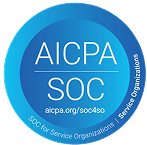MBA paths for international students: From scholarships to six-figure jobs
For international students studying overseas, the Master of Business Administration (MBA) remains one of the most powerful ways to pivot careers, build a global network, and access high-paying roles in the U.S. or Canada. But it’s also one of the most expensive – and competitive – postgraduate degrees you can pursue.
The good news? A growing number of MBA programs are adapting to the needs of international students, offering more scholarship access, STEM-designated tracks, and career support for OPT and H-1B pathways. The challenge is understanding how to navigate these options strategically—so your investment actually pays off.
Here’s how to evaluate MBA programs that work for your goals, your finances, and your long-term career.
Not all MBA programs are built the same
Many international students assume all MBAs offer similar outcomes. But the reality is more nuanced. Program structure, visa eligibility, and post-MBA career support vary significantly—and can impact both your employability and your ability to stay and work in North America.
Before applying, ask:
-
- Is the program STEM-designated? If so, you may be eligible for a 36-month OPT window instead of 12 months.
- What percentage of international students land jobs within six months of graduation?
- Does the school offer OPT and H-1B sponsorship guidance or partner with companies that do?
- Are there career tracks (e.g., tech, finance, product) aligned with global hiring trends?
These questions often matter more than prestige. Choosing the right MBA means picking a program that understands—and supports—your unique trajectory as an international student.
Scholarships, assistantships, and alternative financing
The average MBA costs between US$70,000–$120,000. For many students, that price tag is daunting—but there are ways to manage it.
Scholarships and fellowships
Many top MBA programs offer merit-based scholarships for academic achievement, leadership, or diversity. Some also run dedicated scholarships for international applicants. These are competitive, so apply early and make your story count.
Graduate assistantships
Some programs offer part-time campus work opportunities—especially for second-year students—to offset tuition costs. While limited, they can make a significant financial difference.
No-cosigner financing options
For students without a U.S.-based cosigner, lenders like MPOWER Financing offer private student loans designed for international MBAs. These MBA student loans cover tuition and living expenses and do not require a cosigner or collateral.
Most importantly, budget for the full cost—not just tuition. Think relocation, internship gaps, travel, laptops, and visa expenses. Choosing an MBA is about full-picture affordability, not just price per credit hour.
Where the MBA leads: Roles and salaries by career path
While MBA salaries vary by industry, many international graduates secure six-figure offers—especially in high-demand roles and locations.
Consulting
Average starting salary: US$140,000–$170,000
Firms like McKinsey, BCG, and Bain actively recruit international MBA graduates and may offer visa sponsorship. Be prepared for a competitive recruitment process and fast-paced work culture.
Product management and tech leadership
Average starting salary: US$120,000–$150,000
Tech companies increasingly seek MBAs for product strategy, operations, and analytics roles. STEM-designated MBA tracks are especially relevant here.
Finance & investment
Average starting salary: US$125,000–$160,000
Investment banks, asset managers, and fintech companies often hire MBAs for associate-level roles. H-1B sponsorship is common in large firms.
Health care, ESG, and operations
Average starting salary: US$95,000–$120,000
These sectors offer strong long-term growth, especially for MBAs with prior technical or regional experience. Fewer international sponsorships may be available, so planning matters.
Know that your pre-MBA experience also shapes post-MBA offers. Students with prior industry or technical experience often command higher salaries than career switchers.
How MPOWER Financing helps MBA students stay financially flexible
MPOWER Financing works with international students pursuing MBA and STEM MBA programs across the U.S. and Canada. Its no-cosigner student loans help cover tuition and may also cover living costs without requiring U.S. credit history or collateral—making it easier to focus on your program and recruiting goals.
MPOWER also offers:
-
- Monthly scholarship opportunities for MBA students
- Access to Path2Success, with resume builders, interview prep, and job filters for OPT and H-1B roles
- Resources for financial planning throughout the MBA, including budgeting for internships and job transitions
MBA students using MPOWER don’t just fund their degree—they also gain tools to better manage the return on that investment.
Check Eligibility
Finding an MBA that fits your ambition and your reality
An MBA can open extraordinary doors—but only if you align the program with your career vision and financial strategy. Look beyond rankings. Ask which schools support international students through real outcomes, not just glossy brochures.
The best MBA for you may not be the most expensive or most famous—it’s the one that moves you closest to your goals with clarity, career alignment, and manageable risk. Choose boldly, plan wisely, and don’t forget – here are tools built just for international students like you.

